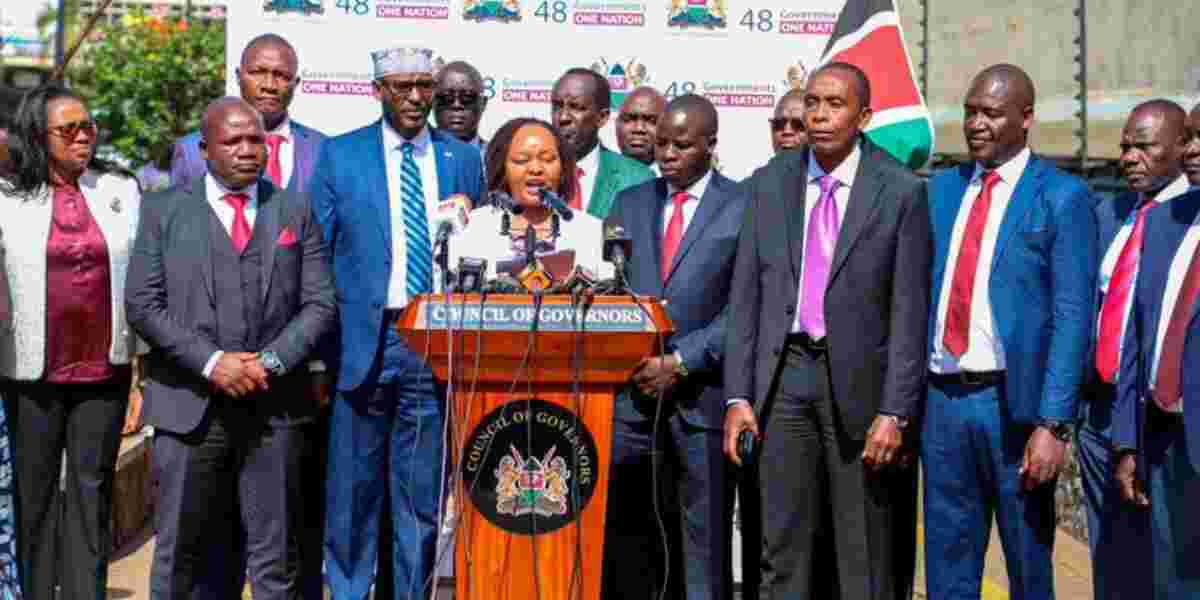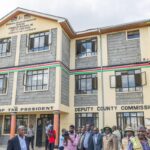Since Kenya embraced devolution in 2013, the equitable share allocation has been the financial lifeline for counties, drawn from national revenue to fund critical services like healthcare, roads, and education. From Nairobi’s hefty Ksh 165.4 billion to Lamu’s Ksh 27.8 billion, these funds—totaling Ksh 3.2 trillion by 2023/2024—reflect a decade-plus of decentralized growth. For Kenyan business professionals, this data isn’t just a ledger; it’s a blueprint for spotting opportunities in procurement, investment, and regional expansion.
This article breaks down the equitable share allocations per county since devolution began, blending hard numbers with actionable insights for 2025. Optimized for keywords like “equitable share allocations by county,” “Kenya devolution funding 2025,” and “county revenue trends,” it’s your go-to resource for navigating this economic landscape. Let’s dive in.
Why Equitable Share Allocations Matter to Businesses
Under Article 202 of Kenya’s 2010 Constitution, at least 15% of nationally raised revenue is shared equitably among counties each year, guided by the Commission on Revenue Allocation (CRA). By FY 2023/2024, counties received Ksh 354.6 billion annually, with cumulative disbursements since 2013 hitting Ksh 3.2 trillion. These funds cover recurrent costs (e.g., salaries) and development projects (e.g., hospitals), shaping local economies.
For businesses, this is more than government spending—it’s a market signal. Counties with bigger shares have more cash for contracts, infrastructure, and services, creating demand for construction, supplies, and tech solutions. Knowing where the money flows can sharpen your strategy.
Top Equitable Share Recipients: The Heavyweights
Here’s where the biggest allocations have landed since 2013:
1. Nairobi – Ksh 165.4 Billion
- Why It Leads: With high population density and urban demands, Nairobi’s 17 constituencies secure top funding.
- Business Angle: Tech firms, construction, and service providers can tap into urban projects.
2. Turkana – Ksh 115.9 Billion
- Arid Advantage: Vast land area and poverty indices boost its share despite low density.
- Opportunity: Renewable energy and water projects are ripe for investment.
3. Kakamega – Ksh 109.2 Billion
- Western Power: Dense population and 12 constituencies drive its haul.
- Insight: Education and healthcare suppliers thrive here.
4. Nakuru – Ksh 107.1 Billion
- Rift Valley Star: Urban-rural mix and 11 constituencies fuel allocations.
- Tip: Logistics and agro-processing firms can leverage its growth.
5. Mandera – Ksh 104.7 Billion
- ASAL Standout: Large landmass and equity focus lift its share.
- Market Potential: Security and pastoral projects beckon.
These top five have claimed over Ksh 602 billion combined—nearly 19% of the total—highlighting urban hubs and equity-driven ASALs as key players.
Mid-Tier Counties: The Steady Spenders
Counties with Ksh 40.6 billion to Ksh 101.6 billion balance population and need:
- Kilifi (Ksh 101.6B): Coastal tourism and population drive funds.
- Kiambu (Ksh 99.1B): Proximity to Nairobi boosts its share.
- Bungoma (Ksh 95.1B): Farming and trade sustain it.
- Kitui (Ksh 91.0B): Rural resilience pays off.
- Wajir (Ksh 84.2B): ASAL equity at work.
- Machakos (Ksh 82.9B): Peri-urban growth fuels demand.
- Meru (Ksh 82.6B): Agro-based economy thrives.
- Kisii (Ksh 81.4B): Dense population drives needs.
- Mombasa (Ksh 75.2B): Port and tourism anchor it.
- Makueni (Ksh 74.5B): Arid innovation shines.
- Narok (Ksh 73.2B): Tourism and farming mix.
- Kwale (Ksh 72.3B)-snip- Coastal growth potential.
- Garissa (Ksh 71.8B): ASAL focus lifts it.
- Kisumu (Ksh 71.3B): Lake Victoria trade hub.
- Migori (Ksh 70.7B): Mining and farming blend.
- Homa Bay (Ksh 69.5B): Fishing and agriculture.
- Marsabit (Ksh 66.6B): Arid potential grows.
- Uasin Gishu (Ksh 65.9B): Breadbasket funding.
- Murang’a (Ksh 65.0B): Agro-driven share.
- Kajiado (Ksh 63.8B): Tourism and real estate.
- Busia (Ksh 63.5B): Cross-border trade.
- Trans Nzoia (Ksh 61.3B): Maize hub funding.
- Siaya (Ksh 61.2B): Nyanza stability.
- Bomet (Ksh 58.3B): Tea and maize focus.
- Nandi (Ksh 58.3B): Highland agriculture.
- Tana River (Ksh 56.6B): Irrigation potential.
- Kericho (Ksh 56.3B): Tea industry base.
- Nyeri (Ksh 55.4B): Coffee and trade.
These counties offer diverse opportunities, from coastal tourism to rural infrastructure.
Lower-Tier Counties: The Underdogs
Counties below Ksh 55.4 billion often face geographic or demographic constraints:
- Baringo (Ksh 53.6B): Livestock and tourism.
- West Pokot (Ksh 53.4B): Pastoral growth.
- Nyandarua (Ksh 51.3B): Potato farming.
- Nyamira (Ksh 48.6B): Dense but small.
- Vihiga (Ksh 47.1B): High density, low land.
- Embu (Ksh 47.0B): Agro-based funding.
- Samburu (Ksh 45.6B): Tourism potential.
- Kirinyaga (Ksh 44.6B): Rice and horticulture.
- Laikipia (Ksh 43.3B): Ranching and tourism.
- Taita-Taveta (Ksh 41.9B): Mining and parks.
- Isiolo (Ksh 40.6B): Trade route growth.
- Elgeyo-Marakwet (Ksh 40.1B): Athletics hub.
- Tharaka-Nithi (Ksh 39.0B): Farming focus.
- Lamu (Ksh 27.8B): Smallest share, port potential.
These counties, often with fewer resources, are prime for niche investments like renewable energy or tourism.
Regional Trends: Where Funds Flow
- Nairobi (Ksh 165.4B): Urban leader.
- Rift Valley (Ksh 735.8B): Nakuru, Turkana, and Uasin Gishu dominate.
- Western (Ksh 436.2B): Kakamega and Bungoma lead.
- Eastern (Ksh 420.0B): Kitui and Machakos shine.
- Coast (Ksh 390.6B): Kilifi and Mombasa anchor.
- Nyanza (Ksh 372.7B): Kisii and Kisumu drive it.
- North Eastern (Ksh 367.9B): Mandera and Wajir top ASALs.
- Central (Ksh 311.1B): Kiambu and Murang’a lead.
Rift Valley and urban hubs lead, while ASALs gain from equity focus.
What Drives Equitable Share Allocations?
The CRA’s formula weighs:
- Population (45%): Bigger counties like Nairobi win.
- Poverty Index (20%): ASALs like Turkana benefit.
- Land Area (8%): Vast counties like Mandera rise.
- Basic Share (25%): Equal across all counties.
- Fiscal Responsibility (2%): Rewards efficiency.
This mix balances equity and need, shaping business prospects.
Economic Impact: Funds at Work
Since 2013, Ksh 3.2 trillion has:
- Created Jobs: Infrastructure projects employ thousands.
- Boosted Services: Healthcare and roads improve access.
- Spurred Spending: Local contracts drive demand.
Businesses in construction (Ksh 1M/road km) or healthcare supplies can cash in.
Challenges in Equitable Share Spending
- Disparities: Nairobi’s Ksh 165.4B vs. Lamu’s Ksh 27.8B.
- Delays: Late disbursements stall projects.
- Capacity: Some counties struggle to spend wisely.
These gaps are your chance—offer solutions like project management or financing.
Opportunities for Businesses in 2025
- Top Counties: Target Nairobi and Nakuru for big contracts.
- ASALs: Innovate in Turkana and Mandera (e.g., solar).
- Mid-Tiers: Supply Kisii and Kilifi projects.
- Infrastructure: Build in growing counties like Kiambu.
- Tech: Digitize services in urban hubs.
The money’s there—go get it.
Future Trends: Equitable Share by 2030
- Growth: Could hit Ksh 400B annually.
- Equity Focus: ASALs may rise further.
- Tech Integration: Smart cities in Nairobi, Kisumu.
Align with these for long-term gains.
Your county’s equitable share is your opportunity—whether it’s Nairobi’s billions or Lamu’s niche. Check your county’s total, connect with local planners, and pitch your business now. Visit our site for funding insights, tender alerts, and growth tools. Let’s turn devolution into profit—starting today!





